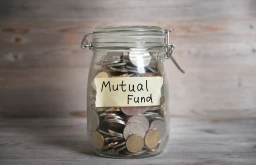Non Convertible Debentures (NCD): How to invest in NCD?

Have you ever heard of non convertible debentures (NCDs)? If not, don’t worry – you’re not alone. NCDs are a type of debt instrument that is not easily converted into equity or shares. In this blog post, we will explain what NCDs are and how you can invest in them.
What is Non convertible Debenture?
Non-convertible debentures are classified as debt. They cannot be converted into stock or equity. NCDs have a fixed maturity date, and the interest can be paid monthly, quarterly, or annually, depending on the fixed tenure specified. When compared to convertible debentures, they provide superior returns, liquidity, low risk, and tax advantages to investors.
NCD example: You can invest in NCDs when the company announces them or buy them after they trade on the secondary market. You must investigate the company’s credit rating, the credibility of the issuer, and the coupon rate of the NCD. It would be advantageous if you purchased NCDs with higher ratings, such as AAA+ or AA+.
Features of NCDs
Taxation – NCDs have tax implications depending on the investor’s tax bracket. If NCDs are sold within a year, STCG at the income tax slab rate will apply. If the NCDs are sold after a year or before the maturity date, LTCG at 20% with indexation will apply. NCD interest income is taxed in the same way as fixed income securities under ‘income from other sources.
Credit rating – Credit rating agencies such as CRISIL, CARE, and others rank companies. A company’s rating is important in determining its potential. A higher credit rating indicates that the company can meet its credit obligations. A low credit rating, on the other hand, indicates that the company faces significant credit risks. If an issuing company fails to make payments, the rating agencies penalise them.
Interest – If held until maturity, NCDs can provide a high interest rate ranging from 7% to 9%. Interest is paid monthly, quarterly, semi-annually, or annually. NCDs also have a cumulative payout option. Furthermore, unsecured NCDs may have a higher interest rate.
Things to be considered by an investor
NCDs are vulnerable to risks associated with business and funding. As a result, if turnover is negatively impacted, the credit rating may suffer. To offset the impact, the company will need to borrow additional funds from banks or NBFCs. As a result, before choosing a company NCD, keep a few things in mind.
Credit Rating of the Issuer: Select a company with an AA or higher credit rating. Credit ratings assess a company’s ability to generate cash from internal and external operations, as well as its long-term viability. This is the best parameter for revealing the company’s financial position.
Level of Debt: For NCD investors, a background check on the asset quality of the company can go a long way. If the company allocates more than 50% of its total assets to unsecured loans, do not invest.
Capital Adequacy Ratio (CAR): The CAR measures a company’s capital and determines whether it has enough funds to withstand potential losses. Check that the company you intend to invest in has at least 15% CAR and has historically maintained that level.
Provisions for Non-Performing Assets: As a positive indicator of asset quality, the company must set aside at least 50% of its assets for NPAs. If the quality suffers as a result of bad debts, consider it a red flag.
Ratio of Interest Coverage: The Interest Coverage Ratio (ICR) measures a company’s ability to comfortably settle interest on its loans at any given time. This ensures that the company can deal with any potential evasions.
Your tax slab: NCDs are appealing to investors in the 10% and 20% tax brackets. This is because if your tax bracket is low, you can earn more.
Types of NCDs
Following are the two types of Non Convertible Debentures.
Secured NCDs: Secured NCDs are considered the safer of the two types because their issues are backed by the company’s assets. If the company fails to pay on time, the investors can recoup their losses by liquidating the company’s assets. However, interest rates on NCDs are low.
Unsecured NCDs: Unsecured NCDs are much riskier than secured NCDs because the company’s assets do not back them up. As a result, when the company fails to pay, the investors have no choice but to wait until they receive payments because the company has no assets to recover their losses. Unsecured NCDs, on the other hand, have a higher interest rate than secured NCDs.

Tips for investing in Non Convertible Debentures
- Organisations resort to using NCDs to raise funds for a specific business purpose. Read the terms and conditions carefully; if they do not provide clarity on how/where your money will be used, do not invest.
- Diversification, or investing across different firms and time periods, can significantly reduce risks.
- NCDs from a single sector (NBFCs that specialise in personal loans) are risky investments. This can result in increased risk exposure.
- NCDs from secondary markets have historically provided higher returns. When a company issues a new NCD, you can buy older ones.
- Never base your decision solely on the interest rate. It makes no difference if the NCD yield remains low.
- When the interest on your NCD is due, this is the best time to sell it. It is the best time to buy a non-convertible debenture. You can anticipate making more money from it.
The bottom line
However, NCDs also carry more risk than bank deposits, as they are not backed by the government or any other entity. Investors should therefore carefully consider their investment objectives and risk tolerance before investing in NCDs. The bottom line is that NCDs can be a good investment option for those looking for higher returns, but they come with greater risks than more traditional investments.
Follow us on Instagram.









